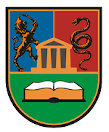Please use this identifier to cite or link to this item:
https://scidar.kg.ac.rs/handle/123456789/22299| Title: | Experimental and Numerical Analysis of Rotary Friction Welding for Al-Cu Joints: Effects of Friction Time on Plastic Deformation and Joint Integrity |
| Authors: | Ratkovic, Nada     Arsić, Dušan     Nikolic, Ruzica  Delić, Marko     Jovanović Pešić Ž.  Mandic, Vesna     Pastorková, Jana  |
| Journal: | Materials |
| Issue Date: | 2025 |
| Abstract: | The principles of the friction welding (FW) process of the two different nonferrous metals, aluminum and copper, are presented in this paper. Considering that the bimetallic Al-Cu joints find applications in electrical engineering, as well as in other industrial fields, the basic characteristics and compatibility of these metals are discussed, along with the influence of various parameters on the properties of their friction welded joints. The experimental study involved rotation friction welding (RFW), which was used to weld aluminum and copper samples. The samples were monitored for shortening due to the applied deformation, as well as the size of the formed mushroom. Then, the central part of the welded joint was cut from the welded samples to determine the hardness and microstructure of the joint. At the end of the research, the possibility of applying software for the design of a numerical model for analysis of the possibility of joining aluminum and copper, with the same input parameters as those used in the experiment, was considered. The numerical simulation exhibited a high agreement with the experimental results. |
| URI: | https://scidar.kg.ac.rs/handle/123456789/22299 |
| Type: | article |
| DOI: | 10.3390/ma18091932 |
| ISSN: | 1996-1944 |
| Appears in Collections: | Faculty of Engineering, Kragujevac |
Files in This Item:
| File | Description | Size | Format | |
|---|---|---|---|---|
| materials-18-01932.pdf | 6.32 MB | Adobe PDF |  View/Open |
This item is licensed under a Creative Commons License


